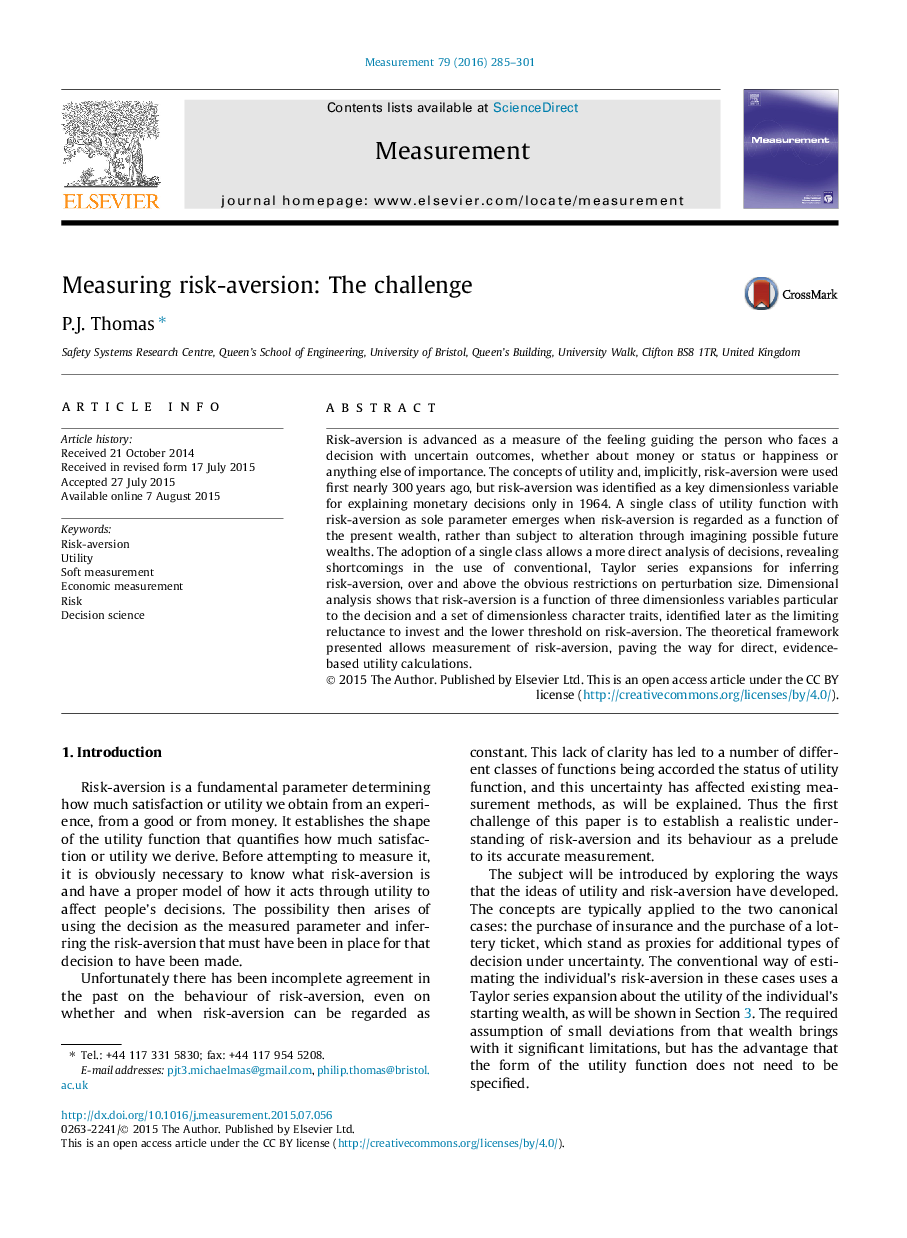| Article ID | Journal | Published Year | Pages | File Type |
|---|---|---|---|---|
| 7124382 | Measurement | 2016 | 17 Pages |
Abstract
Risk-aversion is advanced as a measure of the feeling guiding the person who faces a decision with uncertain outcomes, whether about money or status or happiness or anything else of importance. The concepts of utility and, implicitly, risk-aversion were used first nearly 300Â years ago, but risk-aversion was identified as a key dimensionless variable for explaining monetary decisions only in 1964. A single class of utility function with risk-aversion as sole parameter emerges when risk-aversion is regarded as a function of the present wealth, rather than subject to alteration through imagining possible future wealths. The adoption of a single class allows a more direct analysis of decisions, revealing shortcomings in the use of conventional, Taylor series expansions for inferring risk-aversion, over and above the obvious restrictions on perturbation size. Dimensional analysis shows that risk-aversion is a function of three dimensionless variables particular to the decision and a set of dimensionless character traits, identified later as the limiting reluctance to invest and the lower threshold on risk-aversion. The theoretical framework presented allows measurement of risk-aversion, paving the way for direct, evidence-based utility calculations.
Related Topics
Physical Sciences and Engineering
Engineering
Control and Systems Engineering
Authors
P.J. Thomas,
